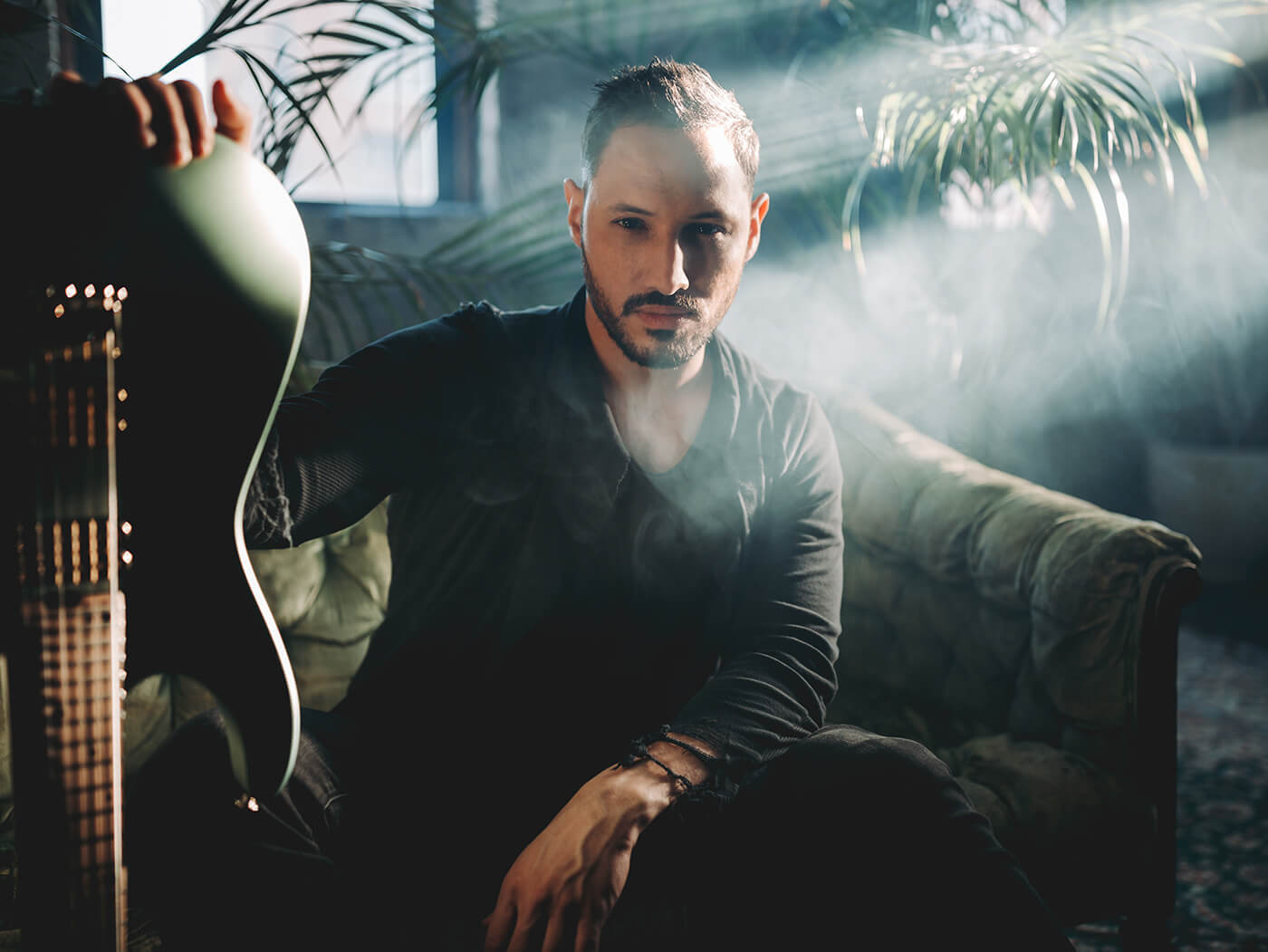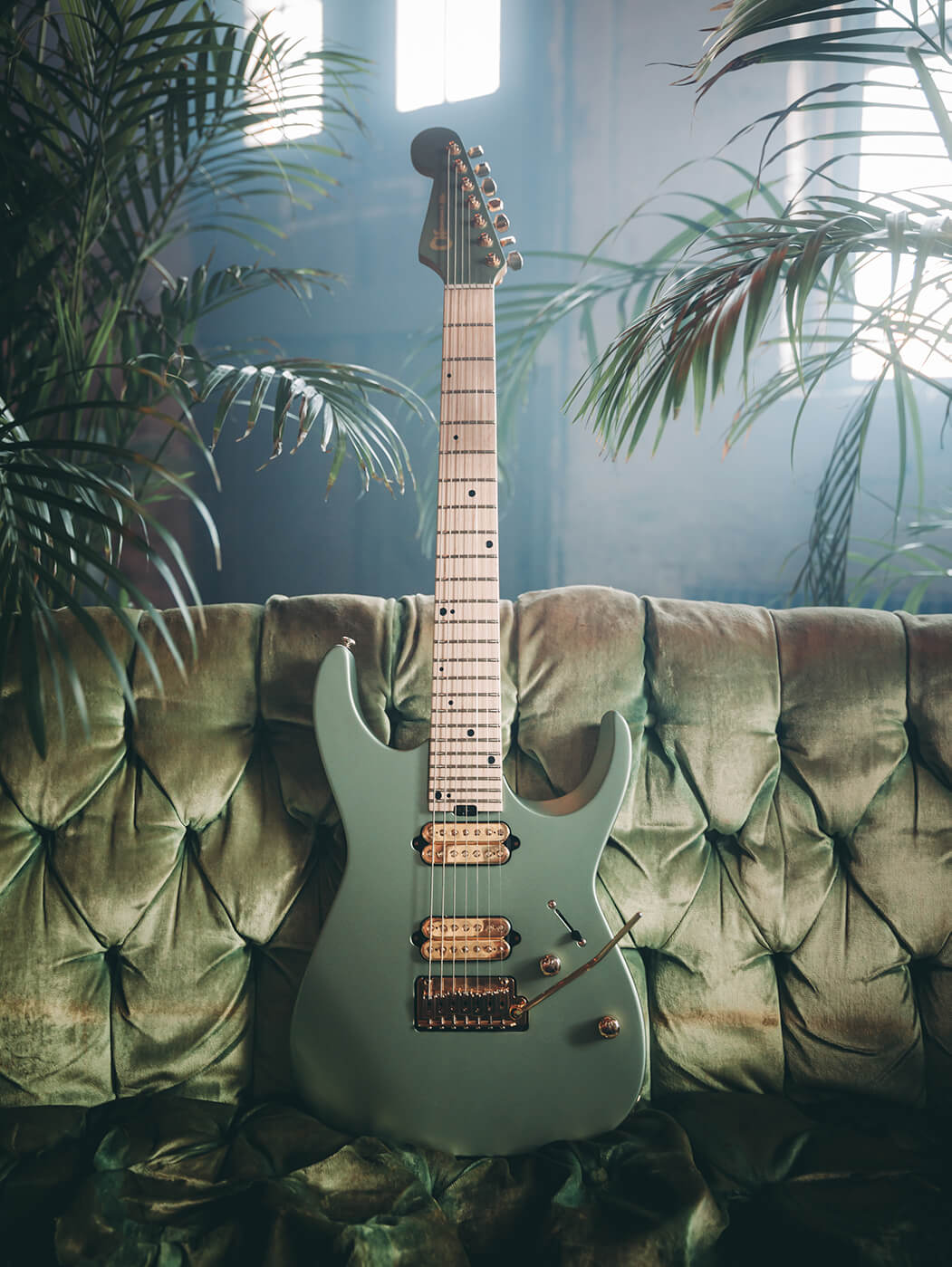Angel Vivaldi’s music is like winemaking: “It takes a while and is a long process but is so much better as time goes on”
The prog-metal virtuoso opens up on his new signature model, the challenges of developing your own guitar, and why he loves concept albums

Image: Andrew Minarik
Over the course of the last few years, Angel Vivaldi’s name has become more well known outside of the US that has championed his formidable abilities, as the smoke from this progressive-metal-fusion player’s fiery technique starts finding its way to these shores.
Such is the high regard for Vivaldi’s chops, Charvel recently afforded a place for Angel on its signature artist roster, and currently remains the only artist to have a signature seven-string model with the brand. After a few spins of his latest album, Synapse, with its interweaving melodies and technically spectacular artistry, you will begin to hear why high-profile companies wish to be associated with him.
We sat down with Angel to discuss his approach to guitar design, mastering techniques, and how to write an instrumental concept album.
How did you end up with Charvel guitars?
“I left Ibanez after eight years and the sharks have a way of smelling blood in the water! I was given a DK24 6 string and fell in love… the rest is history as we continue to write it.”

You started off with the DK24 as the basis for your signature model; what were the first changes you needed to make to accommodate your own playing style?
“First thing was contouring the bottom horn to be less invasive to more ambitious playing styles. I always hated how the bottom horns of RG, RGD or RGA’s hit the top of my left hand during wide stretches while simultaneously blocking higher fret access.
“Second was the neck profile. I’m a rhythm guitarist first and a lead guitarist second, so having a neck that was comfortable for both worlds was absolutely crucial for me to have. Charvel slayed both.”
What did you learn about building and designing guitars during the design process?
“I learned that you simply cannot make a seven-string version of a six-string guitar and vice versa. They are both their own entities and have to be treated as such, especially when it comes to neck profiles.”
With your lead lines you seem to be primarily using the neck pickup; do you not like the bridge for lead?
“I enjoy a fuller, warmer saturation rather than a sharp/precise sounding saturation. I feel that can be abrasive if not used properly with high-gain setups. I’d say it’s a 65/35 ratio between neck and bridge. Tapping and legato sound much more fluid when using the neck pickup most of the time. Both react differently with dynamics and techniques, which to me is an important way of how guitarists convey emotion. A note sings on a bridge pickup differently than it soars through a neck pickup, which affects my vibrato pace and style. Both have their place in a mix.”

Your last album, Synapse, was released in 2017. Are there plans to record another studio album?
“Yes, I have a ton of new music in the works which includes the follow-up release Away With Words, Part 2 which will be released in 2020. [A new track, Triple Helix (feat. Cole Rolland), is just released – Ed.] It’s always taken me a while to write music. Instrumental material is very difficult to write, much harder than anything with vocals and most instrumentalists will 100 per cent agree. Because there aren’t lyrics there’s so much more responsibility note-to-note to captivate a listener’s attention while also expressing a mood with notes.
“I used to really beat myself up for taking a while in between releases, but as I get older I’m much more accepting of myself. A lot of people like beer on tap and that’s great, nothing wrong with that. However, my music has much more in common with winemaking – it takes a while and is a long process but is so much better as time goes on. My legacy is important to me and I’d never rush a release because that’s what kids want these days. Whether it’s music, food or sex it’s all about quality over quantity for me.”
Your releases are generally concept albums. Why?
“There’s a couple of reasons. I’ve always been heavily inspired by artists such as Björk, Nine Inch Nails, Tori Amos and Michael Jackson because they all put an immense amount of thought into their artistry in very different ways. With a concept, I can visualise what I want the feel of the album cycle to be, what I want my videos, photos, artwork wardrobe all to look like, etc.
“Lastly, writing to the restriction of the concept is helpful for me. Keeping to a concept gives me that much more incentive to story-tell through my phrasing and how I structure and arrange the music. Otherwise I’m going to sit there like an over-caffeinated squirrel just blasting senseless notes because I have the technique to do so. Nobody wants that noise! (laughs). Well maybe some do, but I sure don’t.”
How do you set out to convey emotion in instrumental music?
“I do it in a variety of ways, concept records being one of them. Beyond that I feel being well versed in many styles has also benefited in properly conveying an array of different emotions. If you listen to the same kind of music over and over you’re likely bound to emulate that in your writing. Different emotions have different dynamics, different colours. Painting with the same red after a while gets old and boring, so I’m more inclined to create something with a ton of colours. Being an instrumentalist can be limiting in a sense… but doesn’t have to be.”
Did you ever set out to make your style identifiable?
“That happens in time with every artist if you’re at it long enough. I think my style is identifiable because when a section of music moves me, I always examine exactly why that is. Is it how a guitarist dynamically transitions from one section to another? Is it the fill? Where’s the melodic tension and how cleverly was it resolved? When you find the things that move you, they subconsciously make their way into your playing.
“If you’re trying to make a name for yourself as an original artist, then you best better believe you need to be identifiable in a line-up of guitarists!”
Were there any techniques you were absolutely obsessed with mastering?
“Lead-wise, I think legato at first which I got from watching Satch – whereas my approach with tapping came from Vai and Hammett early on.”
Did you make a conscious effort to combine technique practise with melody?
“The way to exploring more unusual phrasing patterns that suit a particular section of a song is to know your muscle memory and just know to do something different. You can’t quite analyse what the different thing is, but things like exercises or learning licks from your favourite players are good gateways into exploring options.”

What was your practice regime, and do you have any advice for guitarists wishing to develop both their technique and songwriting abilities? What was the most important lesson you felt you learned?
“Technique is easy. Do something properly a million times over and over and, boom – you’ve achieved technique. There’s no shortage of YouTube videos explaining technique. It’s what you do with the technique that will captivate and inspire others. Very few will care that you can play fast and thank god for that.
“Know yourself – know your level of ambition/dedication, know your intention, know your strengths and your weaknesses. If you struggle to write full songs maybe being in a collaborative band would be better. If you’re very strong in your vision, then maybe going the solo route is better suited for you. One is not better than the other you simply have to honour your process. If there’s something you don’t like about yourself, seek creative ways to change it both in life and behind a guitar. Be the best version of yourself first – always!”
Triple Helix is available now via angelvivaldiofficial.com
